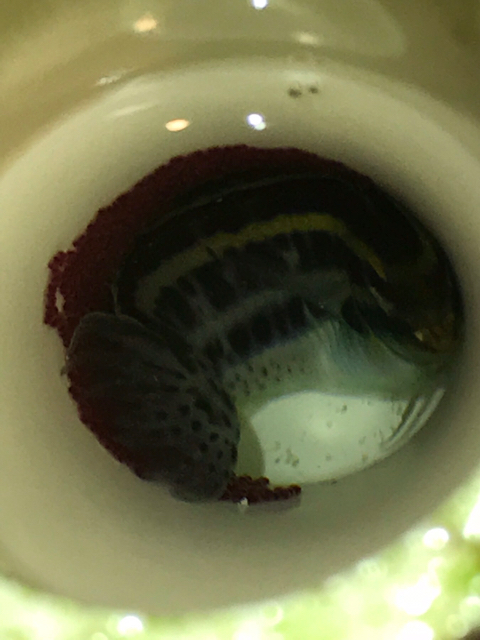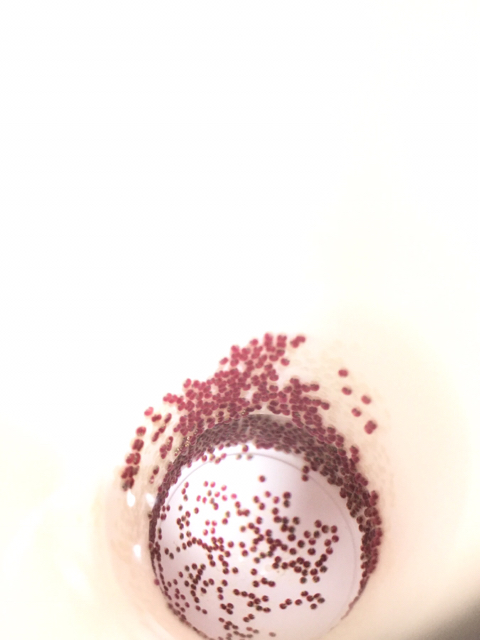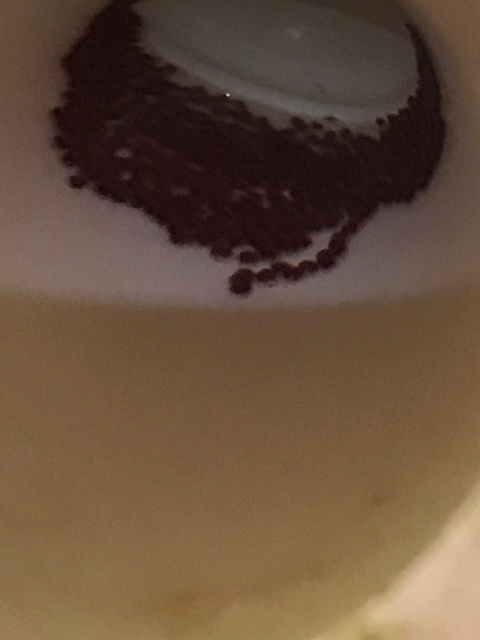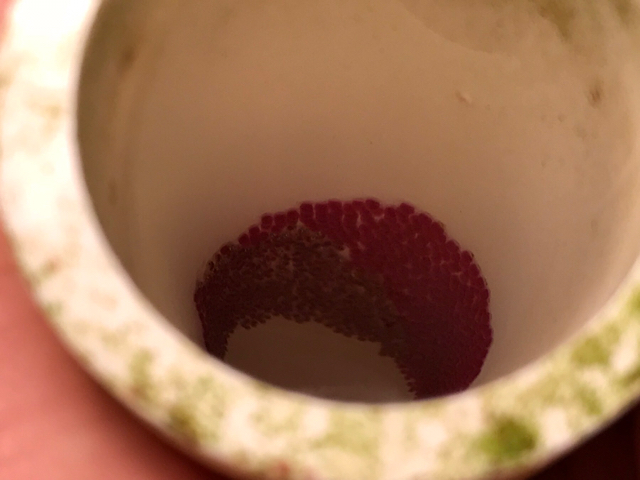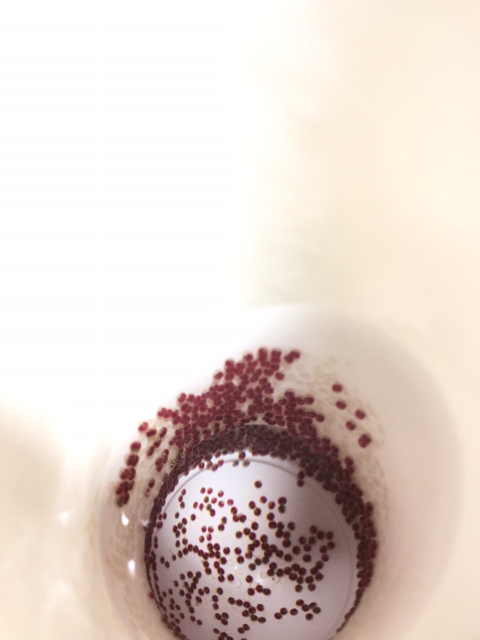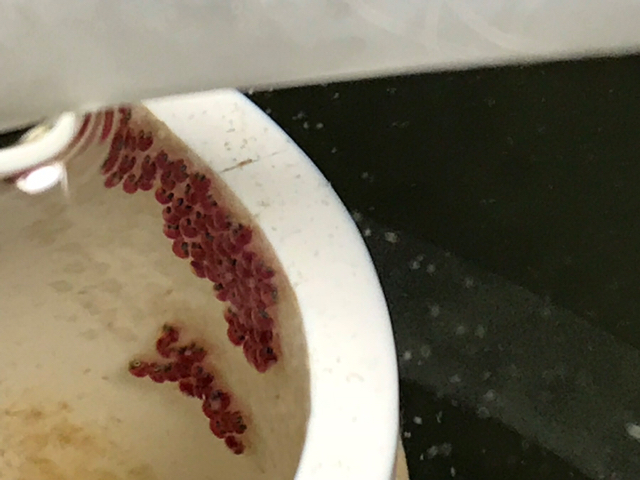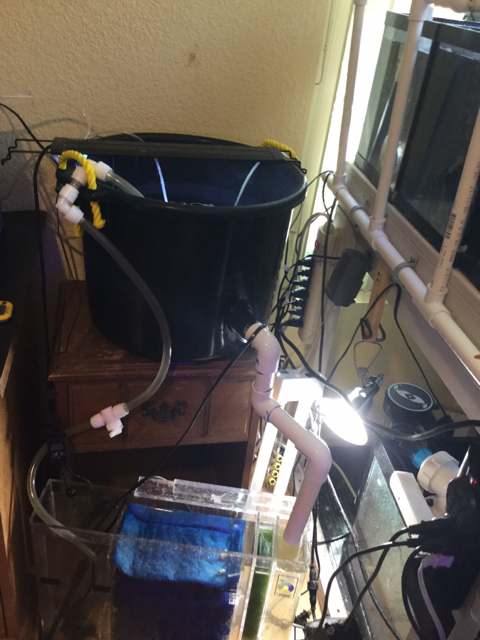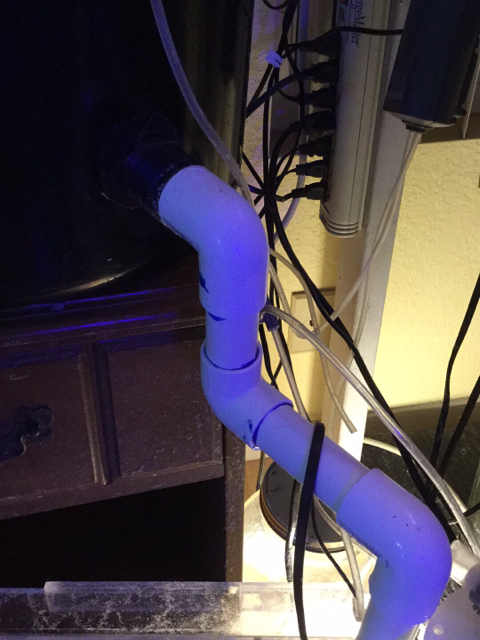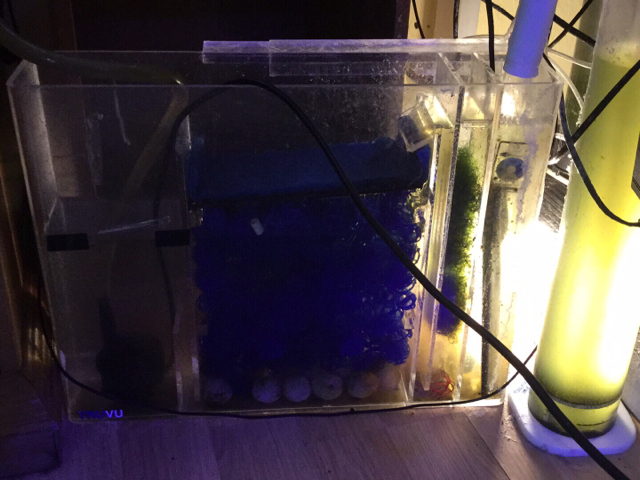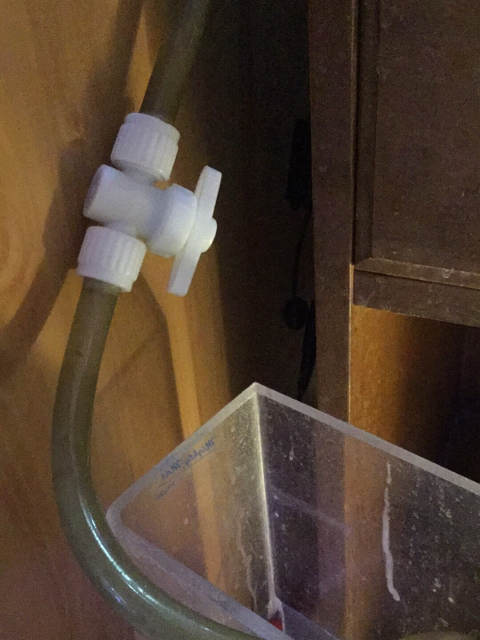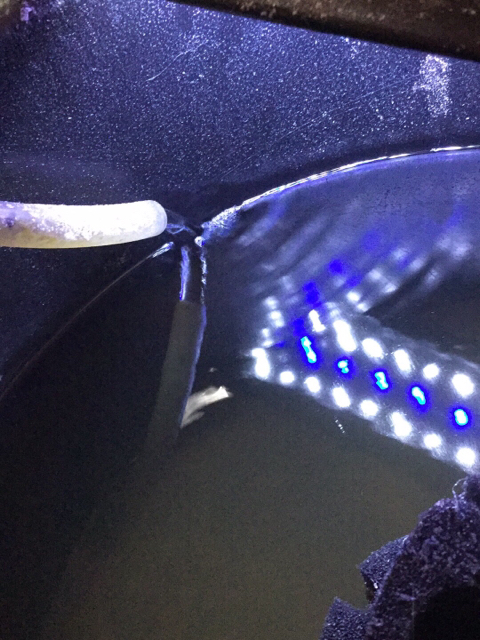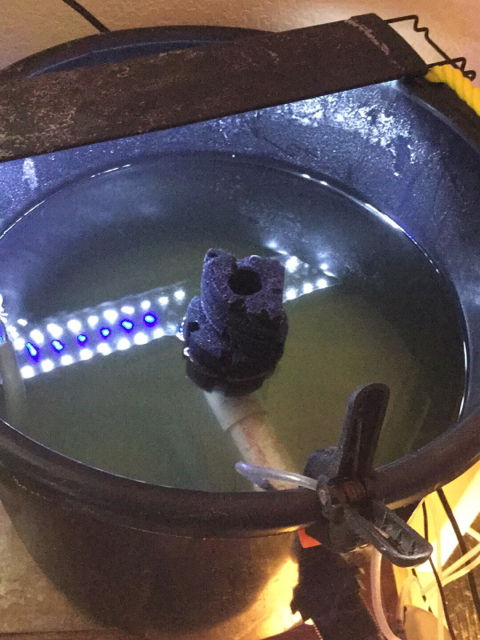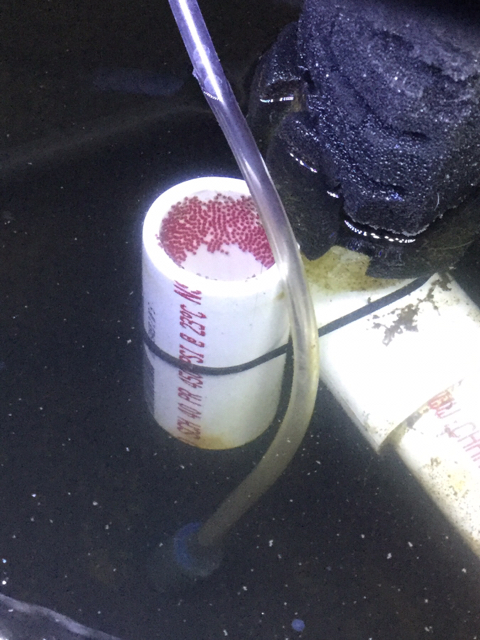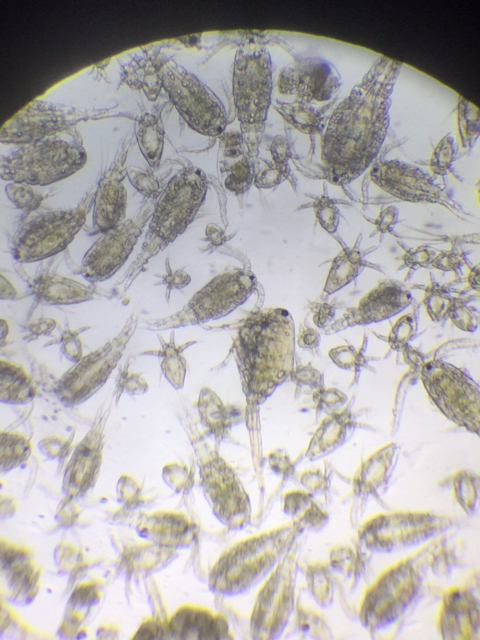Hello everyone. I'd like to share a success that I'm very proud of. I've been breeding marine ornamentals for the last year and a half. I saturated watching a series of YouTube videos on how to breed clownfish. From there, I learned how to culture rotifers, the most popular and universal first food for used in breeding fish mostly. You feed the rotifers microalgae, which also can be culture at home fairly easily, but buying a concentrate with many strains of algae is a lot easier. These concentrates contain extra essential and vital nutrients that are then fed to the larvae. Sounds like a lot but not that complicated. The hard part is keeping up with the water quality.
One of my first brood stock purchases was a group, of 5 Striped Blennies. They caught my eye with their sleek look. The vivid golden background is perfectly contrasted with horizontal pigment lines that run down most of the sides, with the rest random pigment dots and really caught my eye. The best quality of this fish is it's personality. These blennies are fun to watch their inquisitive, comical and curious nature. I could sit for hours and watch them.
After I got them home, acclimated and settled in to their new home in my larger display tank. They use the natural small indentations or "œcaves" in the live rock. They will look in to check it first, then turn around and back in. I did find out after the fact that these little guys ha e FANGS AND VENOM! Also known as the Fang or Venom Blenny. The venom is a powerful neurotoxin which can immobilize predators, even when swallowed. The venom from this little fish is so unique that it is being investigated by medical researchers because of the way that it acts on opioid receptors in humans. It was written up in the AMA Journal and a few aquaculture journals. Full of surprises.
Ill be posting the videos and pics in order and they are not really that organized yet. I will be posting the pics as I write this thread. I feel like theres way too little education about sustainable breeding by producing tank raised slecimens. These aquacultured fish and other marine ornamentals like shrimp, are alot healthier and handled with more care than their wild counterparts. We need to preserve our oceans, the wildlife, vast coral reefs and the whole ecosysem which is in great danger of becoming overwhelmed by the changing environment. We need to be wise stewards of this gift that we posses. We all can do our part as hobyists, to educate everyone.This is my part. The next posts will follow shorty so stay tuned.
Heres some pics of some of the adult broodstock of Striped Blennies.
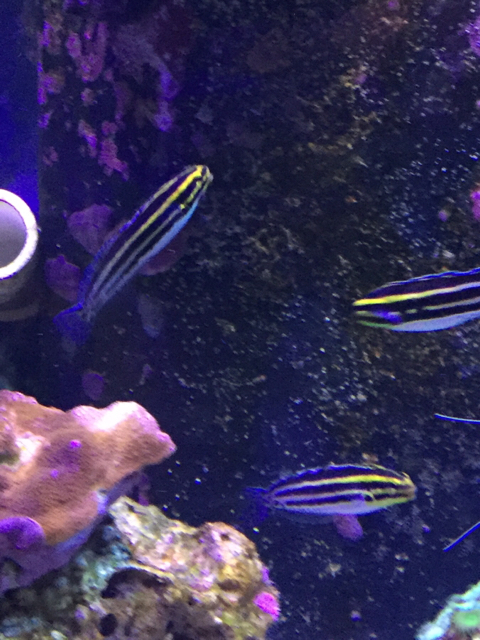
 .jpg[/IMG]
.jpg[/IMG]
Sent from my iPad using Tapatalk
One of my first brood stock purchases was a group, of 5 Striped Blennies. They caught my eye with their sleek look. The vivid golden background is perfectly contrasted with horizontal pigment lines that run down most of the sides, with the rest random pigment dots and really caught my eye. The best quality of this fish is it's personality. These blennies are fun to watch their inquisitive, comical and curious nature. I could sit for hours and watch them.
After I got them home, acclimated and settled in to their new home in my larger display tank. They use the natural small indentations or "œcaves" in the live rock. They will look in to check it first, then turn around and back in. I did find out after the fact that these little guys ha e FANGS AND VENOM! Also known as the Fang or Venom Blenny. The venom is a powerful neurotoxin which can immobilize predators, even when swallowed. The venom from this little fish is so unique that it is being investigated by medical researchers because of the way that it acts on opioid receptors in humans. It was written up in the AMA Journal and a few aquaculture journals. Full of surprises.
Ill be posting the videos and pics in order and they are not really that organized yet. I will be posting the pics as I write this thread. I feel like theres way too little education about sustainable breeding by producing tank raised slecimens. These aquacultured fish and other marine ornamentals like shrimp, are alot healthier and handled with more care than their wild counterparts. We need to preserve our oceans, the wildlife, vast coral reefs and the whole ecosysem which is in great danger of becoming overwhelmed by the changing environment. We need to be wise stewards of this gift that we posses. We all can do our part as hobyists, to educate everyone.This is my part. The next posts will follow shorty so stay tuned.
Heres some pics of some of the adult broodstock of Striped Blennies.


Sent from my iPad using Tapatalk

